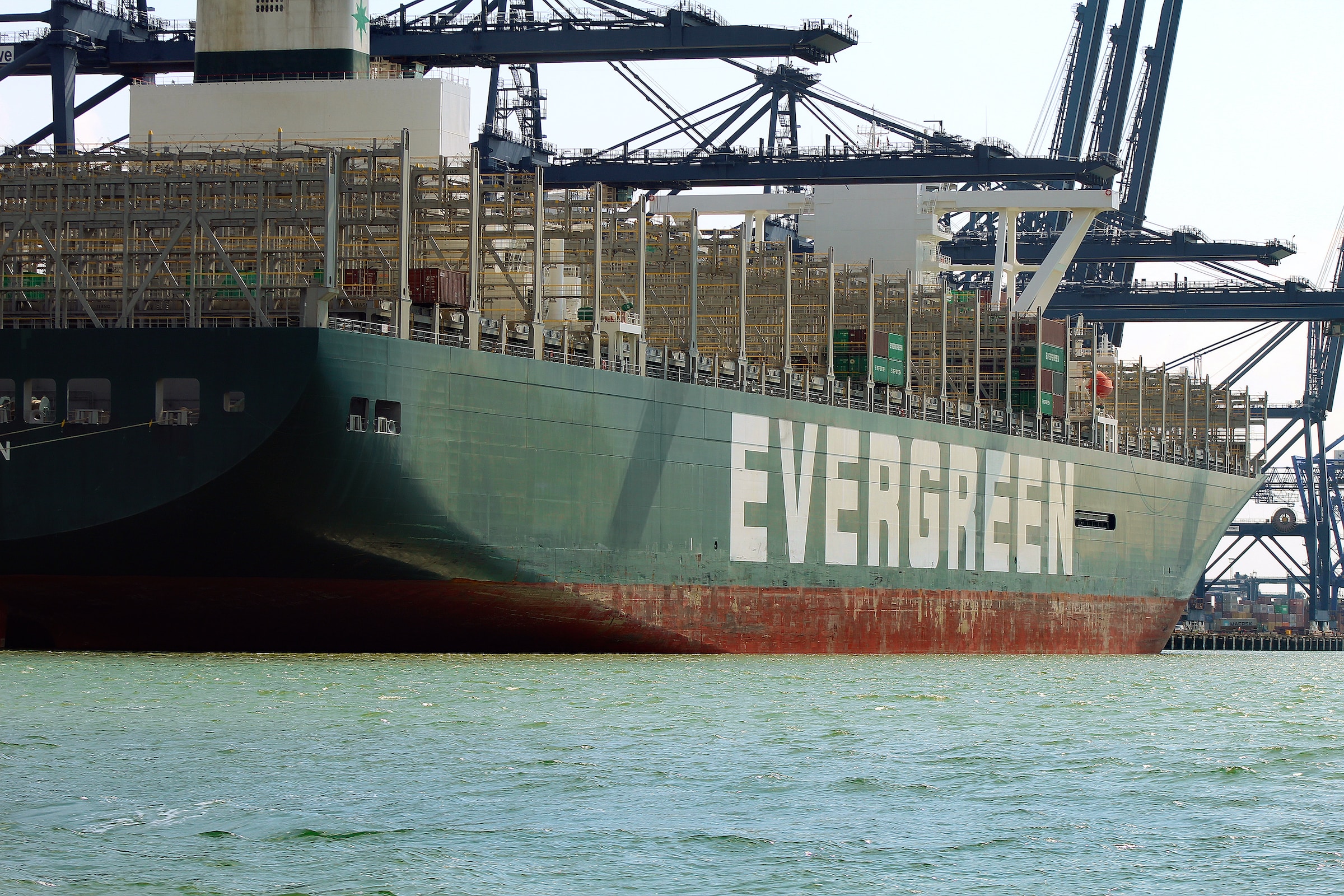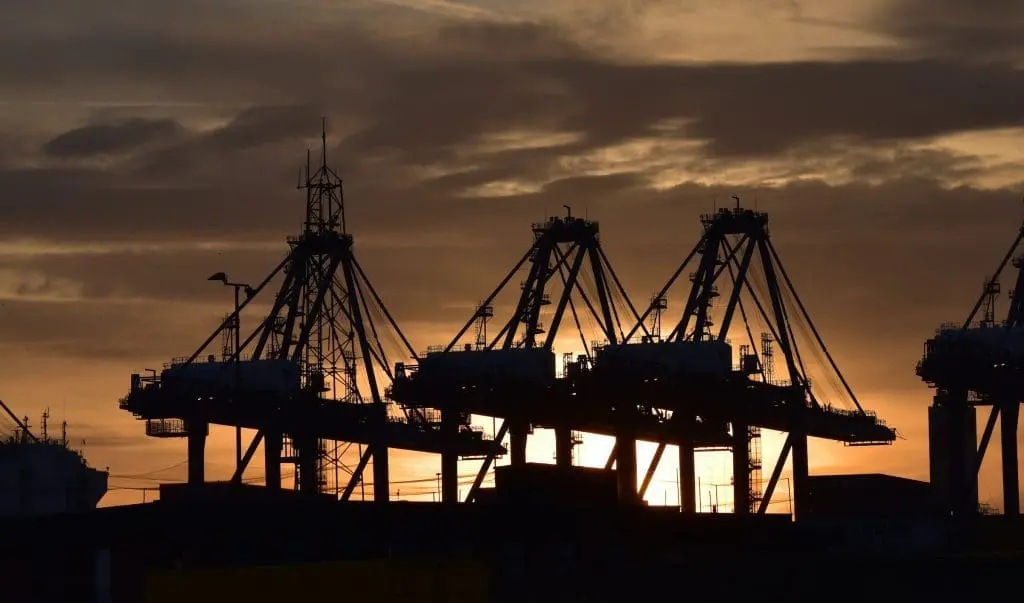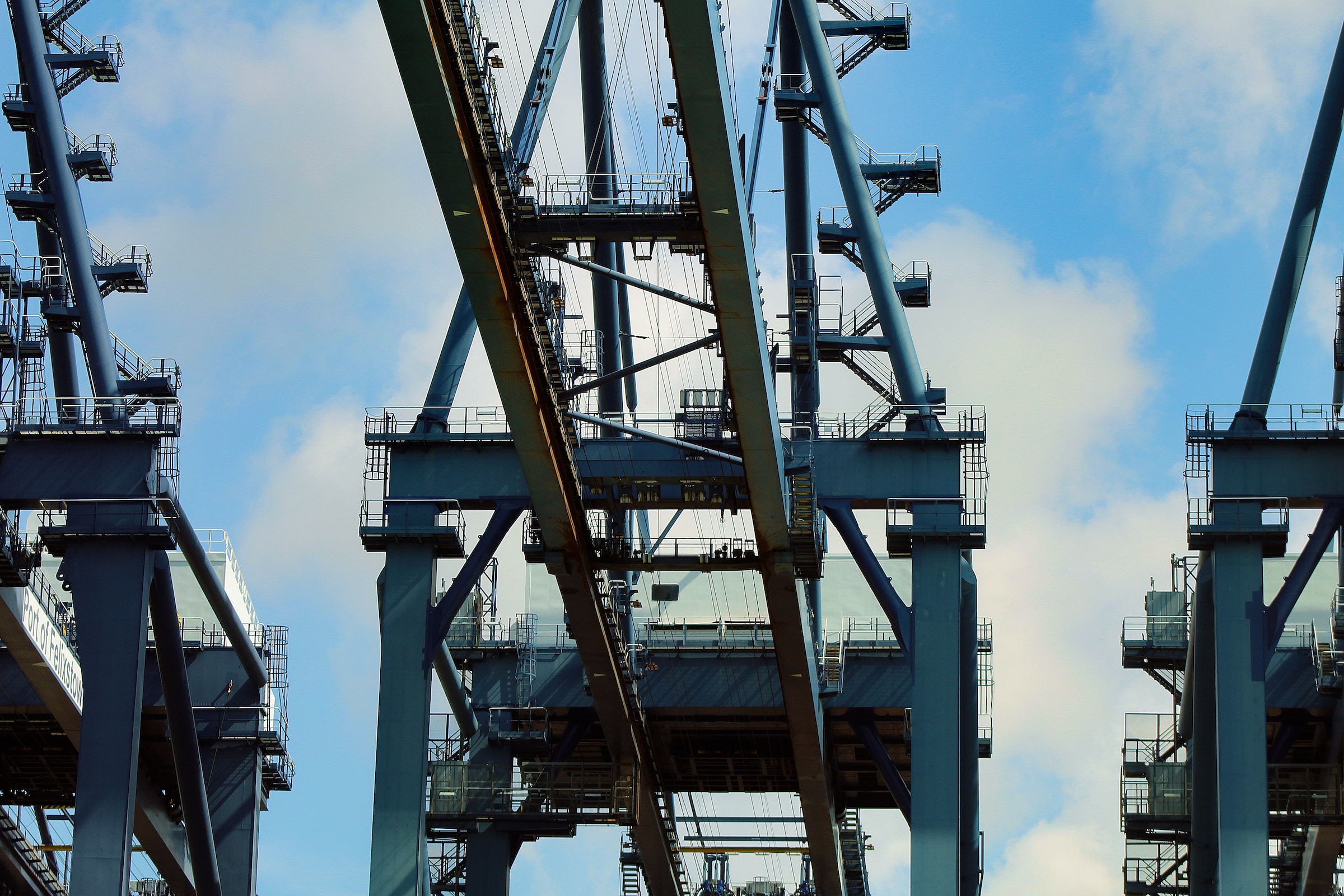The UK’s Top 5 Busiest Shipping Ports

Looking to improve your transport compliance?
Looking to improve your transport compliance? Download Transport Manager Templates (→)
Top 5 Busiest Shipping Ports In The UK
What are the top 5 busiest UK shipping ports? The United Kingdom is home to some of the busiest shipping ports in the world. These ports play a crucial role in the UK’s economy, facilitating the movement of goods and services from around the globe. In this blog post, we will take a look at the busiest five UK shipping ports.

1. Port of Felixstowe
The Port of Felixstowe is the busiest container port in the UK, handling over 4 million TEUs (twenty-foot equivalent units) of cargo each year. Located in Suffolk, East Anglia, it is strategically located on the east coast of England, making it an ideal gateway to Europe and Asia. The port is owned and operated by Hutchison Ports UK, and it has a workforce of over 3,000 people.
The Port of Felixstowe is the busiest container port in the United Kingdom, handling over 4 million TEUs (twenty-foot equivalent units) of cargo each year. Located in Suffolk, East Anglia, it is strategically located on the east coast of England, making it an ideal gateway to Europe and Asia.
The port has a long history, dating back to the late 19th century when it was established as a trading post for goods coming from the Far East. Over the years, the port has grown and expanded, and today it is one of the largest and most modern container terminals in the world.
The port is owned and operated by Hutchison Ports UK, a subsidiary of Hutchison Ports Holdings, one of the largest container terminal operators in the world. Hutchison Ports UK has invested heavily in the port’s infrastructure, with a focus on increasing its capacity and efficiency. This investment has helped to make the port one of the most technologically advanced in the world, with state-of-the-art equipment and processes that enable it to handle large volumes of cargo quickly and efficiently.
The port’s location on the east coast of England is a key advantage, as it provides easy access to the major markets of Europe and Asia. The port is well-connected to the UK’s road and rail networks, which allows it to transport cargo quickly and efficiently to destinations across the country.
In recent years, the port has undergone a significant expansion, with the development of a new deep-water terminal that can accommodate some of the largest container ships in the world. This expansion has helped to increase the port’s capacity and efficiency, making it an even more attractive option for shipping companies looking to move their cargo to and from the UK.
The port of Felixstowe is a major contributor to the UK’s economy, supporting thousands of jobs and facilitating the movement of goods and services around the world. With its strategic location, state-of-the-art infrastructure, and commitment to innovation and efficiency, it is likely to remain one of the busiest and most important ports in the UK for many years to come.
2. Port of Southampton
The Port of Southampton is the UK’s second-busiest container port, handling around 2 million TEUs of cargo per year. Located on the south coast of England, it is a major hub for transatlantic trade, and it also has strong links with Asia and the Middle East. The port is operated by Associated British Ports (ABP), and it has a workforce of over 1,700 people.
The Port of Southampton is one of the busiest container ports in the United Kingdom, handling around 2 million TEUs (twenty-foot equivalent units) of cargo per year. Located on the south coast of England, it is a major hub for transatlantic trade, and it also has strong links with Asia and the Middle East.
The port has a long and rich history, dating back to the Roman era when it was used as a trading post. Over the centuries, the port has grown and expanded, and today it is one of the most important ports in the world.
The port is operated by Associated British Ports (ABP), one of the largest port operators in the UK. ABP has invested heavily in the port’s infrastructure, with a focus on increasing its capacity and efficiency. This investment has helped to make the port one of the most technologically advanced in the world, with state-of-the-art equipment and processes that enable it to handle large volumes of cargo quickly and efficiently.
The port’s location on the south coast of England is a key advantage, as it provides easy access to the major markets of Europe, Asia, and the Americas. The port is well-connected to the UK’s road and rail networks, which allows it to transport cargo quickly and efficiently to destinations across the country.
The port of Southampton has a diverse range of customers, including shipping lines, freight forwarders, and importers and exporters. It handles a wide variety of cargo, including containers, cars, and breakbulk cargo. The port is also a major hub for cruise ships, with millions of passengers passing through its terminals each year.
In recent years, the port has undergone a significant expansion, with the development of new container terminals and the deepening of the shipping channel to accommodate larger vessels. This expansion has helped to increase the port’s capacity and efficiency, making it an even more attractive option for shipping companies looking to move their cargo to and from the UK.
The port of Southampton is a major contributor to the UK’s economy, supporting thousands of jobs and facilitating the movement of goods and services around the world. With its strategic location, state-of-the-art infrastructure, and commitment to innovation and efficiency, it is likely to remain one of the busiest and most important ports in the UK for many years to come.
3. Port of London
The Port of London is the UK’s third-busiest container port, handling over 1.5 million TEUs of cargo each year. Located on the River Thames, it is a vital gateway to Europe and beyond, and it handles a wide range of goods, including cars, food, and chemicals. The port is operated by the Port of London Authority, and it has a workforce of over 400 people.
The Port of London is a major port located on the River Thames in southeast England. It is the UK’s second-largest port by tonnage and handles around 50 million tonnes of cargo each year. The port has a rich history dating back over 2,000 years, with the river Thames being a vital artery for trade in the region since Roman times.
Today, the Port of London is operated by the Port of London Authority (PLA), a statutory body responsible for the port’s safety, security, and navigation. The port handles a wide variety of cargo, including containers, bulk cargoes such as coal and oil, and breakbulk cargoes such as timber and steel.
The port is strategically located, providing access to major markets in Europe and beyond. It is well-connected to the UK’s road, rail, and air networks, making it an important hub for trade and transportation. The port is also home to London Gateway, a state-of-the-art deep-sea container terminal that is capable of handling some of the largest vessels in the world.
In recent years, the port has undergone a significant transformation, with major investment in infrastructure and facilities. This has included the development of new container terminals, the upgrading of existing facilities, and the creation of new logistics parks and distribution centers. These developments have helped to increase the port’s capacity and efficiency, making it an even more attractive option for shipping companies looking to move their cargo to and from the UK.
The Port of London is a major contributor to the UK’s economy, supporting thousands of jobs and generating billions of pounds in trade each year. With its strategic location, modern infrastructure, and commitment to sustainability and innovation, it is likely to remain a key player in the global shipping industry for many years to come.

4. Port of Liverpool
The Port of Liverpool is the UK’s fourth-busiest container port, handling around 900,000 TEUs of cargo each year. Located in the north-west of England, it has strong links with North America and Europe, and it is a key hub for transatlantic trade. The port is owned and operated by Peel Ports, and it has a workforce of over 1,000 people.
The Port of Liverpool is one of the largest and most important ports in the UK, located in the city of Liverpool on the northwest coast of England. The port has a rich history, dating back over 800 years, and has played a significant role in the development of the city and the wider region.
Today, the port is operated by Peel Ports, one of the UK’s largest port operators. It handles a wide variety of cargo, including containers, bulk cargoes such as coal and grain, and roll-on/roll-off (RoRo) cargoes such as cars and trucks. The port is also home to one of the largest cruise terminals in the UK, welcoming over 60 cruise ships each year.
The port’s location on the west coast of England makes it an important gateway to the Irish Sea and the Atlantic Ocean. It is well-connected to the UK’s road and rail networks, providing easy access to destinations across the country and beyond.
In recent years, the port has undergone a significant transformation, with major investment in infrastructure and facilities. This has included the development of Liverpool2, a new deep-water container terminal that is capable of handling some of the largest vessels in the world. Liverpool2 has helped to increase the port’s capacity and efficiency, making it an even more attractive option for shipping companies looking to move their cargo to and from the UK.
The Port of Liverpool is a major contributor to the UK’s economy, supporting thousands of jobs and generating billions of pounds in trade each year. It is also committed to sustainability and innovation, with a focus on reducing its environmental impact and developing new technologies to improve efficiency and productivity.
Overall, the Port of Liverpool is a key player in the global shipping industry, with a rich history, modern infrastructure, and a commitment to innovation and sustainability. With its strategic location and ongoing investment in the future, it is likely to remain a major hub for trade and transportation for many years to come.
5. Port of Immingham
The Port of Immingham is the UK’s fifth-busiest container port, handling around 500,000 TEUs of cargo per year. Located on the Humber estuary in Lincolnshire, it is a major gateway to Europe and the rest of the world, and it handles a wide range of goods, including oil and gas, chemicals, and coal. The port is owned and operated by Associated British Ports (ABP), and it has a workforce of over 1,000 people.
The Port of Immingham is a major port located on the east coast of England, in the town of Immingham in North East Lincolnshire. It is one of the busiest ports in the UK, handling over 60 million tonnes of cargo each year, and is an important hub for trade and transportation.
The port is operated by Associated British Ports (ABP), one of the largest port operators in the UK. It handles a wide variety of cargo, including bulk cargoes such as coal, iron ore, and petroleum products, as well as containers and roll-on/roll-off (RoRo) cargoes such as cars and trucks.
The port is well-connected to the UK’s road and rail networks, with easy access to destinations across the country and beyond. It is also located close to major industrial centers such as Sheffield, Leeds, and Manchester, making it an attractive option for businesses looking to move their cargo.
In recent years, the port has undergone significant expansion and modernization, with major investment in infrastructure and facilities. This has included the development of new deep-water berths, the upgrading of existing facilities, and the creation of new logistics parks and distribution centers. These developments have helped to increase the port’s capacity and efficiency, making it an even more attractive option for shipping companies looking to move their cargo to and from the UK.
The Port of Immingham is a major contributor to the UK’s economy, supporting thousands of jobs and generating billions of pounds in trade each year. It is also committed to sustainability and innovation, with a focus on reducing its environmental impact and developing new technologies to improve efficiency and productivity.
Overall, the Port of Immingham is a key player in the global shipping industry, with modern infrastructure, a strategic location, and a commitment to sustainability and innovation. With its ongoing expansion and investment in the future, it is likely to remain a major hub for trade and transportation for many years to come.
Top 5 Largest Shipping Ports In The UK
In conclusion, these five ports are the busiest in the UK, and they play a vital role in facilitating trade and commerce. They handle a wide range of goods, from cars and food to chemicals and coal, and they have strong links with Europe, Asia, and the Americas. As the UK continues to navigate its future outside of the European Union, these ports will become even more important in maintaining the country’s economic prosperity.
Looking to improve your transport compliance? Download Transport Manager Templates (→)

2 Comments